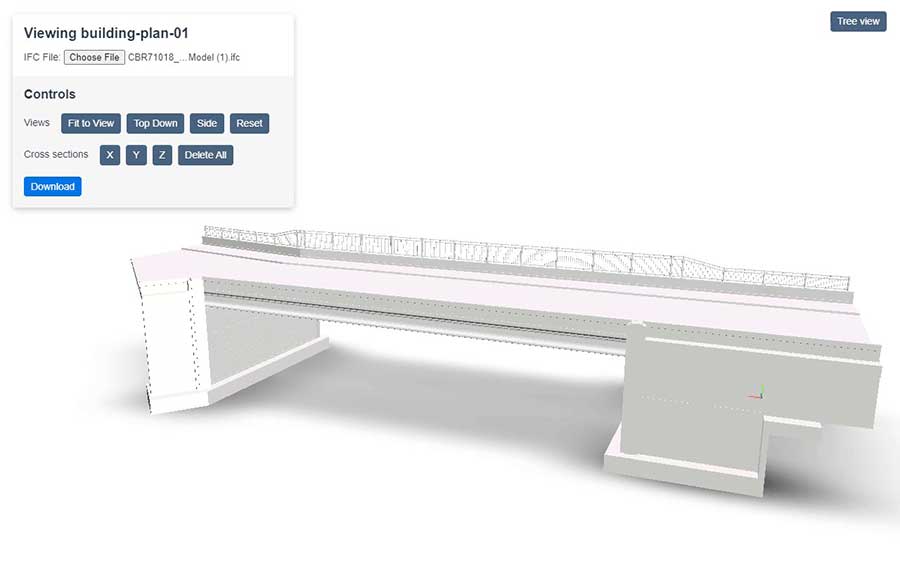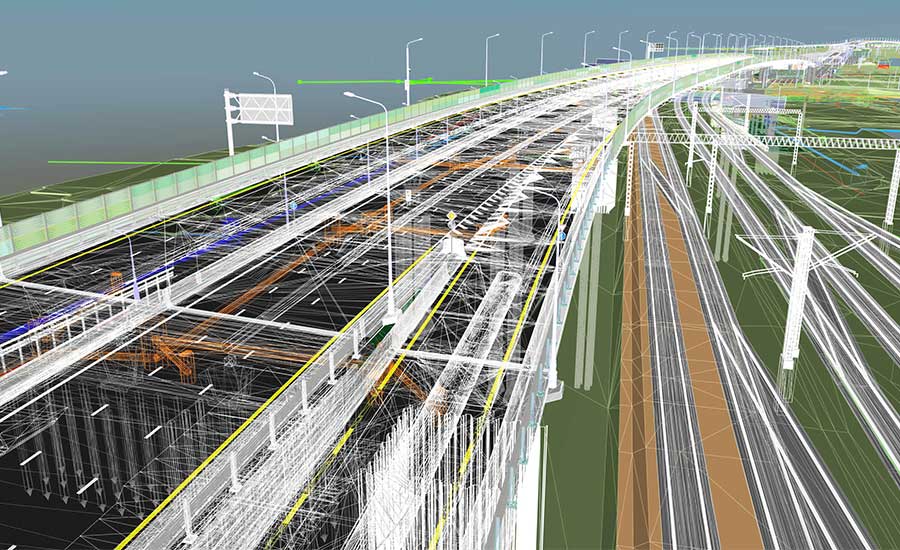
We know that IFC and BIM are critical components of the digital transformation in the civil infrastructure industry. This is why Infotech is committed to bringing the industry forward by bringing BIM to the bidding and construction phases and better understanding how we fit into the digital project delivery lifecycle. Last time, we delved into the exchange format aspects of IFC. I likened IFC to “3D PDF” to help introduce those new to the standard, but IFC is much more than that. We will explore the bigger IFC concepts over time, but for now, I would like to show how the open data standard might allow us to leverage Building Information Modeling (BIM) within Infotech’s bidding products.
State-level infrastructure construction is advertised and bid almost exclusively through Infotech’s Bid Express service, with 44 transportation agencies using our service. Agencies advertise work in the form of groups of proposals called lettings. A proposal contains one or more projects comprised of items that specify the tasks, materials, and equipment that are required to complete the work. Items are derived from a state’s published specifications for road and bridge construction. These items are a very convenient way to delineate the work being performed from a quantity-oriented, inspection-based perspective, but they do not typically translate cleanly to as-designed physical objects. For example, a physical object might be a bridge deck, but the corresponding items in the project might be the concrete material, the curing process, and the removal of any formwork. Items are delineated this way so an agency may choose to inspect, test, and pay for each task separately. What, then, are our options to track both the designed physical object and the items that correspond to contractor payments? I believe there are opportunities at each phase of the construction process where meaningful information can be collected, enriched, and made available to the entire ecosystem. For now, let’s focus on the bidding phase.
Currently, an agency prepares a project by entering all of the items mentioned above into AASHTOWare Project or similar systems. They will also flatten the one or more models that reflect the project’s design into 2D plans for inclusion in the advertisement. There is an incredible amount of data lost at this moment. Crucial information such as the geospatial coordinates, geometry, and material compositions are now relegated to, at best, spreadsheets, and at worst, no longer available outside of specs associated with the bid items, creating massive amounts of rework for the winning bidder as they build their own models for construction from scratch.
What if, instead, prospective bidders could examine the owner’s models as part of the proposal? Rotating a model in three dimensions, zooming into specific elements, and cross sectioning to get closer looks at otherwise hidden elements can all be made available at this time. Greater communication between the owner and bidders, higher quality information, and greater access to that information could lead to better project outcomes and earlier detection of issues that would not need to be expensive change orders later. One of the reasons this has been historically challenging to address is owners and contractors use different tools with different data formats, most of which are not open data standards. To view models in any possible data format would be prohibitive. For this and all the reasons discussed in the last blog, IFC is the missing piece of the puzzle.
To demonstrate this idea, I formed a team to create a proof of concept that gives bidders model viewing functionality right alongside proposals in Infotech’s Bid Express service. With this small step, I believe we can begin discussing and building upon this functionality in remarkable ways.

Let’s go back to the problem of mapping a physical object to its corresponding bid items. Now that a bidder can see the model, it’s natural they will want to see which bid items belong to which elements in a model. Ideally, the team designing the model would be pairing items to objects, but that is not always possible today, so we need to consider other options. This might one day evolve into AI techniques like natural language processing and machine learning, but we can make significant progress before we even get to those more elaborate methods using much simpler heuristics to narrow down the possible pairings significantly.
Thanks to IFC, we can know quite a bit about objects within the model. For example, if someone using the Bid Express model viewer selects a curb, we start with knowing it’s an IfcKerb (“Kerb” is the UK spelling of “curb”). Just by knowing that, we could narrow down the proposal items to just those that have the word “curb” in them. From there, we might further narrow down our results through other data provided by IfcKerb, such as Manufacturer, ModelNumber, and ModelReference. For a real world example of this, I looked at a recently awarded proposal that contained the following bid item:

If someone was viewing the model for this project and clicked on the curb, we would have narrowed it down to a single bid item through a simple search, as there were no other bid items with the word “curb” in them. In cases where it cannot be narrowed down to a single possibility, just presenting the “possible matching items” list would be a drastic improvement.
From here, the possibilities expand even further. Once we know which items belong to which elements of the model, we can maintain it throughout construction, where we can add the as-built information, and into asset management, which will benefit greatly from the as-built data captured throughout. Additionally, the winning bidder can take the model into their modeling software as the starting point for creating a constructible model. This will not only save time, but bring all of that valuable information IFC makes possible.
We are still in the early stages of incorporating BIM concepts into our products. If you have feedback or ideas on how to better incorporate BIM in the bidding phase of construction, please contact us here. This will help us to both maintain momentum and bring the best ideas to the forefront! Ultimately, Infotech sees a world where the data is seamlessly exchanged, interacted with, and enriched by all participants in the construction lifecycle, and we are proud to be part of the advancements to get us there.

